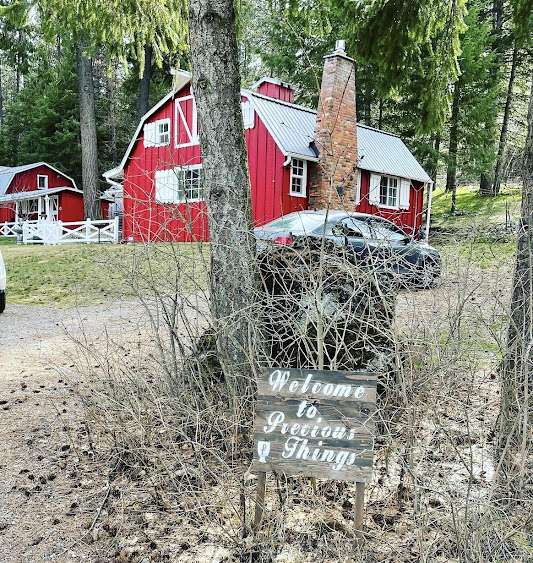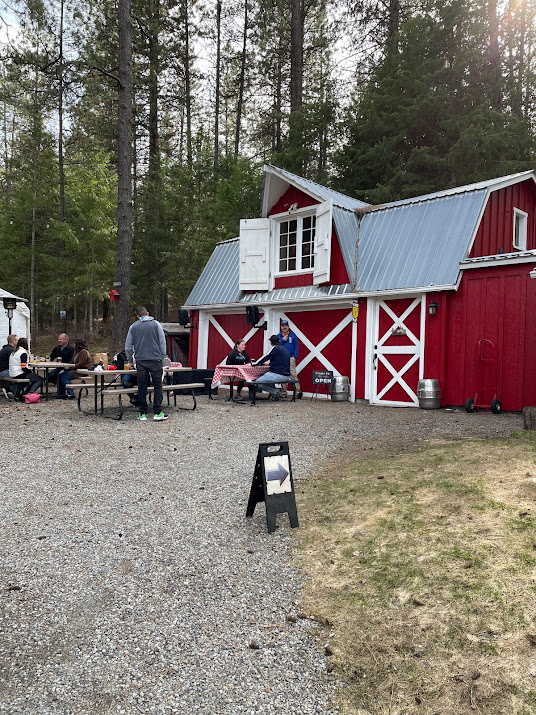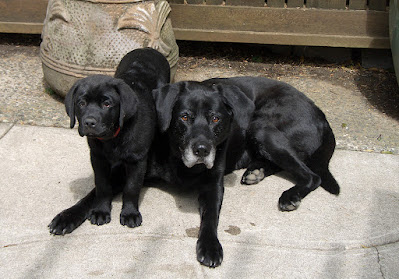After a two year hiatus due to the pandemic, the Oregon Brewers Festival returned to Waterfront Park this past weekend. This is undoubtedly the most important festival in the history of Oregon craft beer. It's always on my calendar, despite the fact that many of my compadres no longer consider it relevant.
Declining attendance in recent years has helped reinforce the notion that the event is, in fact, irrelevant. But OBF remains the largest beer festival in Oregon, one of the largest in the country. Even with declining attendance, an event like that isn't really irrelevant...until numbers drop to the point where the event is simply canceled.
I was interested to see what changes organizers would make this year, particularly given the two year pandemic hiatus. They implemented some fairly dramatic changes to address drooping attendance in 2019. This year turned out to be more of the same, although the changes weren't all positive in my mind.
Reduced Days
They cut the festival down to three days this year...Thursday, Friday and Saturday. Many will recall that the fest was four days in 2018 and 2019, after being five for several years. Abandoning Sunday again, as they had done in 2019, was a good call; Sunday had notoriously dreadful attendance for years before it was finally dropped. Wednesday was dropped this year to get the event down to three days, I assume due to attendance woes. No complaints.
The Venue
One of the big changes in 2019 was switching the southside beer taps to the river side of the park, thus opening up the shaded area on the westside of the park for seating. In past years, trailers were situated in the shaded area.
The 2019 setup was repeated this year. In fact, organizers liked the arrangement so much they eliminated the northside beer taps altogether and moved the entire beer portion of the event to the southside. Yup. The festival grounds were cut roughly in half this year.
I suppose it was inevitable that the footprint of the festival grounds would be squeezed, given the issues with attendance. But it felt a little odd walking into what had been the central compound and seeing open space where tents and trailers had always been on the northside.
I wondered how the vendors in that central area were doing. There was definitely less foot traffic there, with the vast majority of people augured in on the southside under the tents or in the shade. Perhaps those vendors paid less for the privilege of being there this year. One can only hope.
Moving the entire beer portion of the event to the southside had it's pluses and minuses. The tents in front of the trailers were larger this year, providing more shade. But the extreme heat and number of bodies under those tents made it rather uncomfortable there. You really needed to vacate the tents once you had a beer, though many did not. The lines weren't bad Thursday afternoon. I'm glad I wasn't around to see what it was like in the evening hours.
When I was looking for a beer at one point, I was surprised to find I couldn't see the beer names until I was close to the taps. As a result, people were often confused about which line to be in. At first I thought the larger tents were responsible, but that wasn't it. In 2019, they had large signs immediately behind each pouring station identifying the beer being poured. Those signs were visible and readable from a good distance. But this year's signs were cheap and small, and they were hung so high that you couldn't see the beer name until you got close. That was not ideal. It's hard to imagine why no one caught it when they were setting up.
Another change this year was no music of any kind. For most its history, OBF had a stage with bands/solo artists playing live music. You could chill with a beer and listen if you pleased. In 2019, they switched to a DJ setup that pumped music around the grounds. That was an annoying change, as the music was often muddled or too loud. Anyway, problem solved this year: No music or stage.
Finally, I was surprised to find several rows of standup tables in the common area just north of the beer tents. With the heat and direct sunlight, these tables were uninhabitable during afternoon hours. I stood at one to jot down some notes at one point and didn't return. Tables with umbrellas would have been better, given the heatwave everyone knew would be part of the festival.
The Beers
They were pouring 42 beers and two ciders according to the event program. I saw a bit of bitching and moaning about the beer selection on social media. I looked at the list in advance and didn't think much of it. But I found some pretty good beers in the 15-20 I tasted, along with the usual losers. The list leaned toward light and hoppy, which surely disappointed folks looking for more options.
After holding the line on cost for many years, they moved to a $2 taster (most beers) this year. No one should have been surprised, as prices on everything have skyrocketed since the pandemic. OBF taster size has varied over the years. In 2019, the taster line was 3 ounces. This year, it was 4. The larger tasting size probably allowed some patrons to feel less aggravated by the price increase. Fifty cents for an ounce of beer is a premium price, but it would have been worse if they'd stayed at a 3 ounce taste.
You could get a full glass of beer or cider if you were so inclined. That would set you back three tickets or $6. The glass, billed at 12 ounces and exactly the same size and form factor as 2019, overflows at less than 12 ounces. So a full glass of beer or cider with any head at all is going to be 10-11 ounces. Do the math if you wonder how much worse of a deal that is than a 4 ounce taster.
As was the case in 2019, there was a printed program this year. They had a mobile app in 2018, but reviews were mixed. I was one of those who actually liked the mobile app and was disappointed to see it go away. But the fact that the 2022 beer list was roughly half of what it was in recent years meant the printed program worked fine. I suspect it's here to stay, unless something dramatic happens.
The Glass and Token Switch
It's become pretty common for beer fests to charge exorbitant prices for "customized" tasting vessels. These plastic glasses aren't special or fancy. OBF has been charging $10 for the tasting glass in recent years. Unless someone shows me an invoice proving otherwise, I assume these glasses cost much less than a dollar apiece. So the glass is nearly pure profit for this and every event that follows the blueprint. The fact that OBF isn't alone in this fleecing doesn't make it okay.
After using wooden tokens for virtually the entire history of the event, organizers switched to paper tickets this year. They were $2 each to align with taster cost. Most beer centric events have gone to some kind of paper ticket. They're undoubtedly cheaper and easier to manage than wooden tokens. I always liked the charm of tokens, which I found easy to keep track of in a pocket. Oh, well.
The transition from tokens to paper tickets presented an opportunity for organizers to make what I consider to be a dumb unforced error. OBF had always honored tokens acquired at past events. You could simply use old tokens as if they were newly purchased. It was a nice policy. But not this year. With the switch to tickets, past tokens had to be exchanged for paper tickets.
Organizers initially said they would trade tokens for tickets, one to one. That would have been a nice gesture to fans who held onto tokens, getting a $2 ticket for each $1 token. But organizers reneged, saying the initial communication was a mistake. Having botched that communication, doubled the price of a taster and downsized the event across the board, organizers might have been wise to suck up whatever loss they would have incurred in exchange for a little goodwill. No deal.
One thing to keep in mind with respect to tickets: I'm guessing the ones from 2022 won't be honored at any future event, as was the case with tokens. There's a financial benefit to not honoring tickets from past events and it mirrors the reason retailers like gift certificates, knowing full well some or many will never be redeemed: Pure profit! That probably isn't the only reason tokens are being dumped, but it's almost certainly one of them.
Thoughts
OBF 22 felt to me like a dumbed down experience at a higher price. For many years I considered the event to be a decent bargain in terms of time and money. But they've altered its character to the extent that, in its current form, it doesn't represent the value it once did. At least in my mind.
I suppose this year's event could be an aberration. The pandemic created a lot of challenges for beer fests and similar events. Plus, OBF organizers have been struggling for several years to come up with ways to reverse sliding attendance. Maybe this year was a perfect storm.
My guess, though, is this was a glimpse into the future. OBF once appealed to a wide swath of people. Attendance was growing rapidly for so many years that the event expanded to five days. Some of us thought it would eventually consume an entire week. Instead, the event is imploding, forced to downsize while boosting prices. That isn't a winning strategy.
Honestly, OBF may be approaching obsolescence. The vision at the outset was to provide a platform for craft brewers to showcase their wares. People didn't know much about craft beer in those days and OBF helped change that. That brought the industry into the mainstream. Today, you can find great beer at an endless number of bars, restaurants, taprooms and breweries.
You might say OBF is victim of a success story it helped author. With great craft beer available everywhere, people don't get as excited about an oversized, awkward event. And the downsizing and price boosting that occurred this year probably aren't a good omen for the future.



































